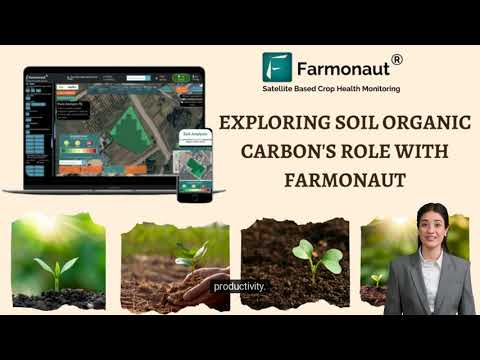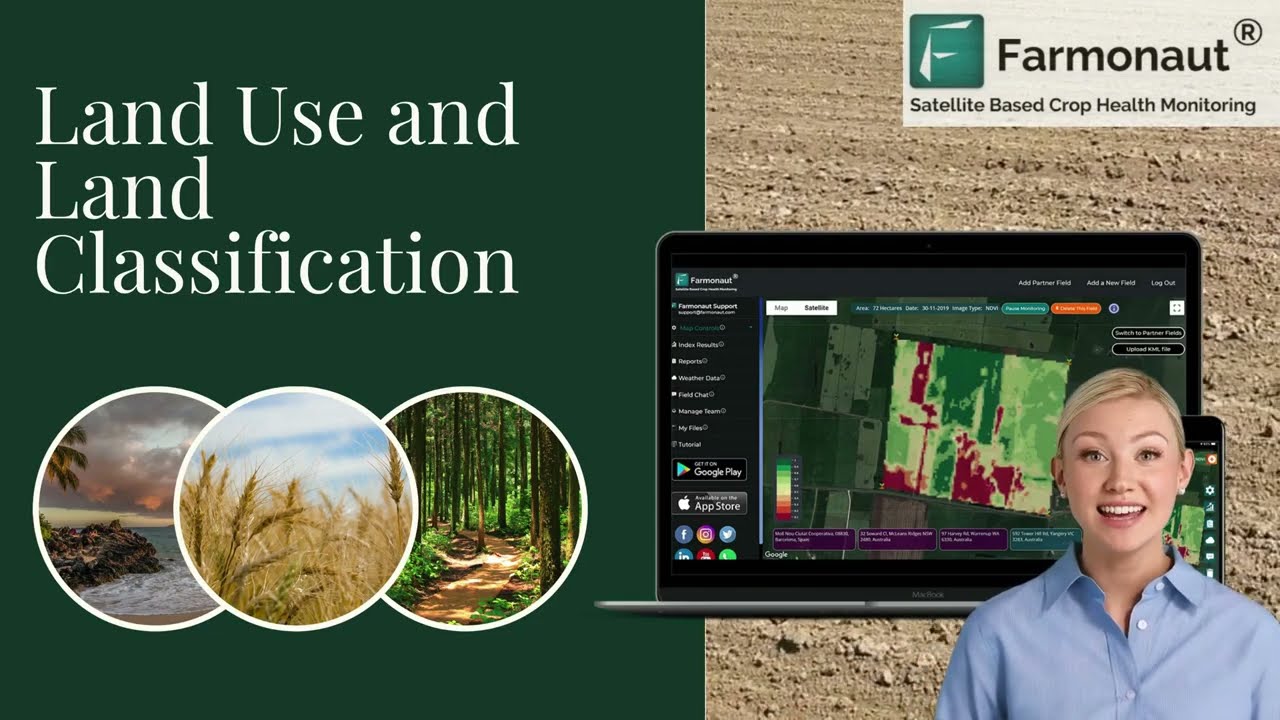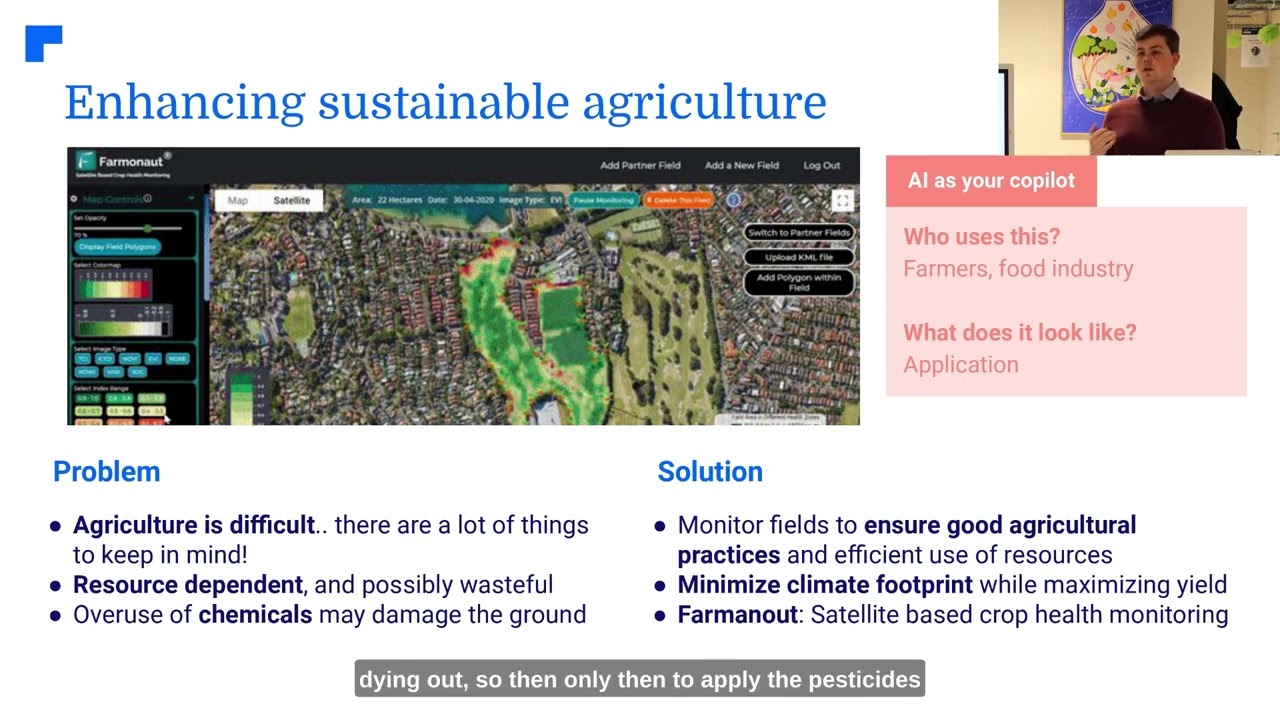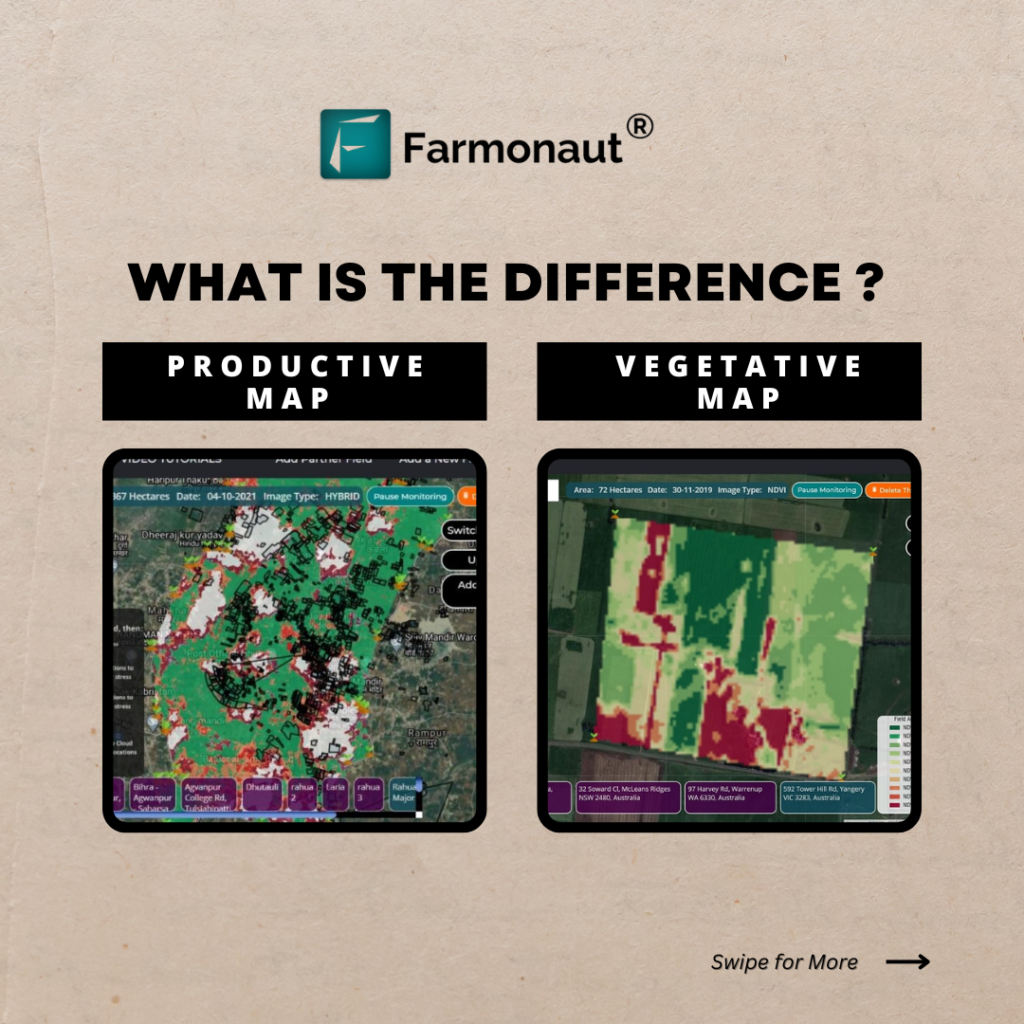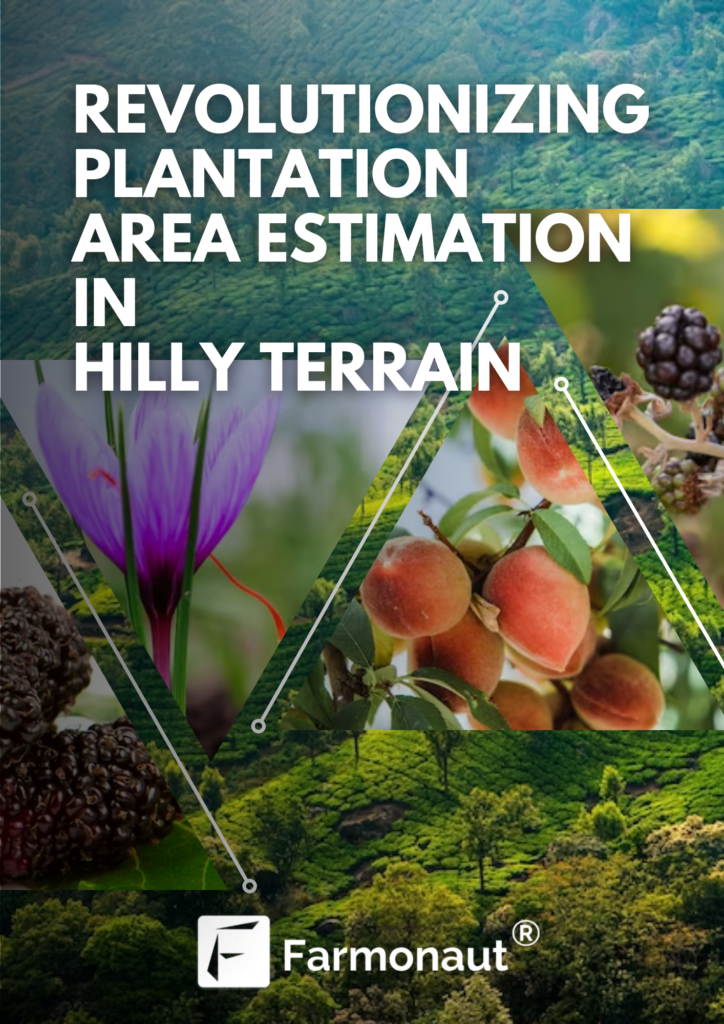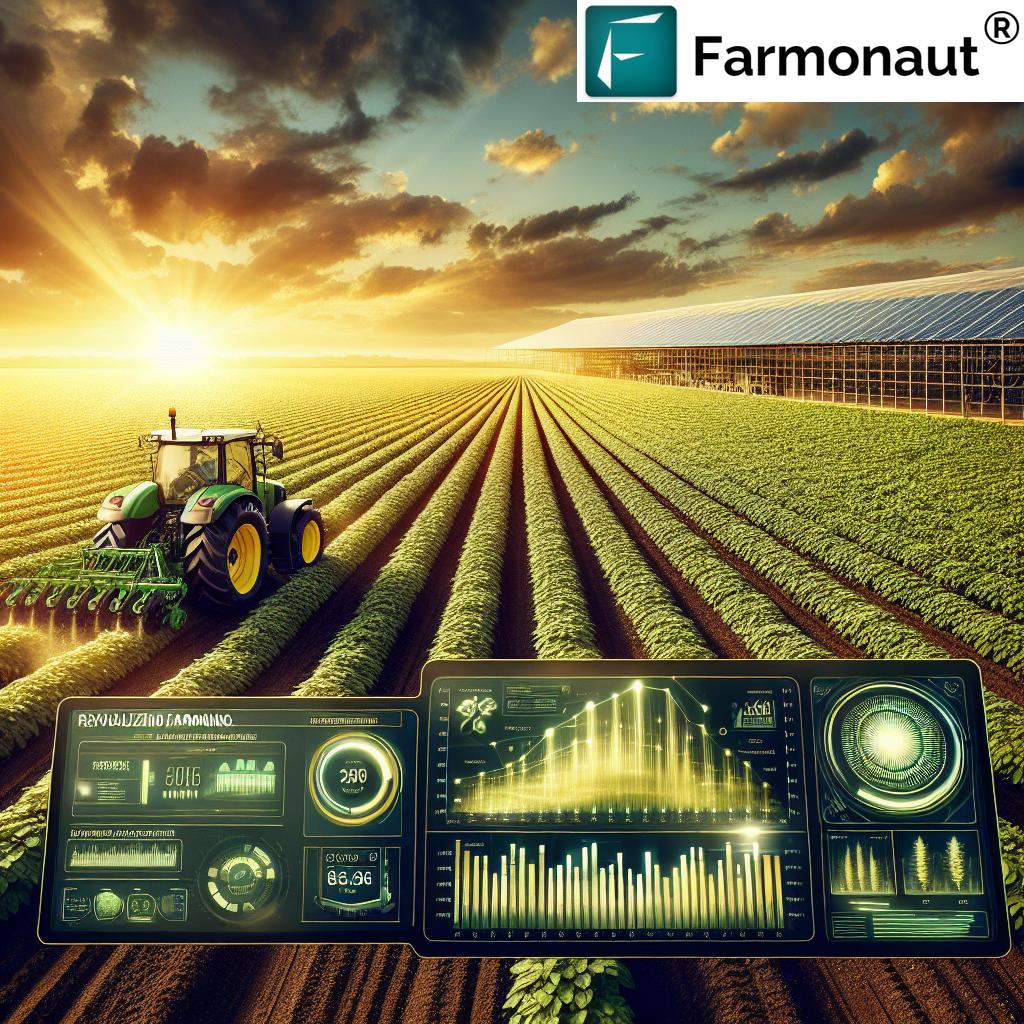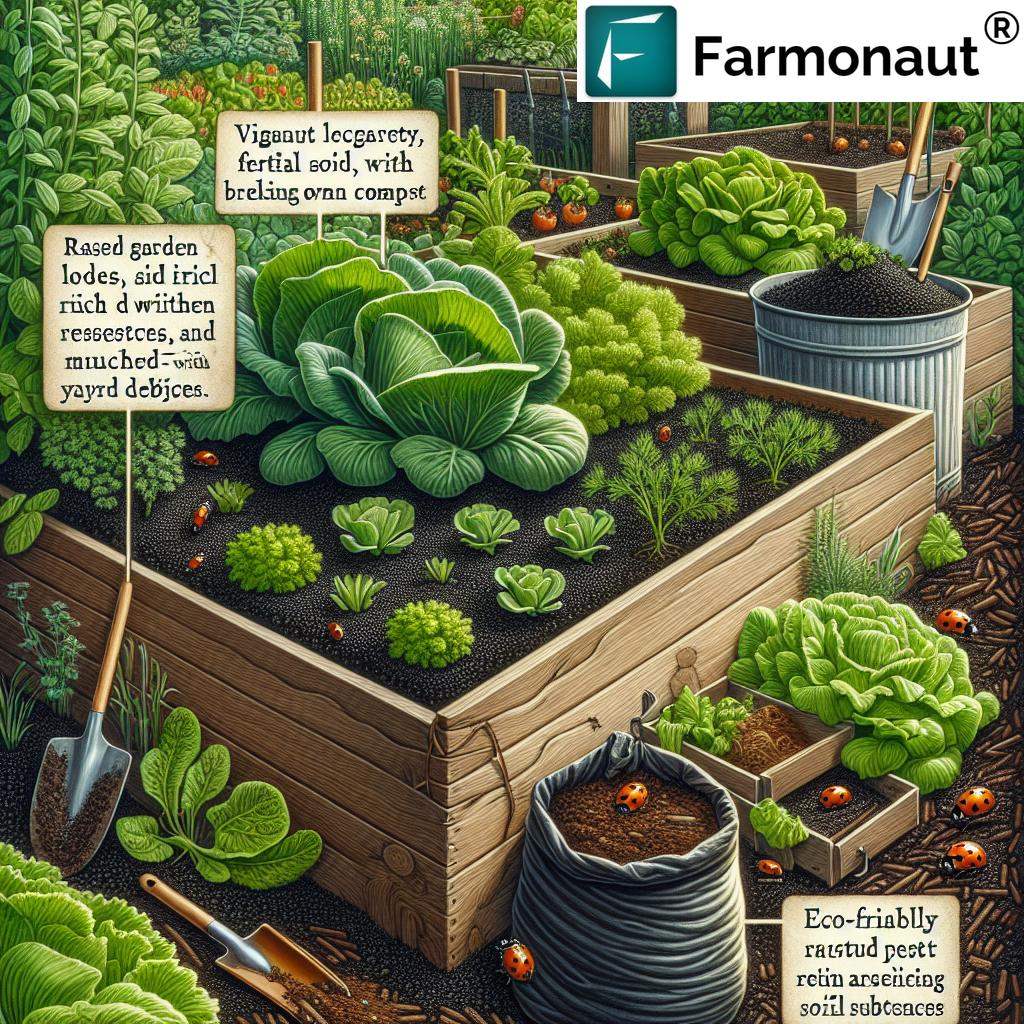Table of Contents
- Introduction to Sustainable Organic Farming
- Core Principles of Sustainable Organic Farming
- Sustainable Organic Farming: 7 Soil Secrets Revealed
- Comparison Table of Sustainable Organic Soil Practices
- Innovations Shaping the Future of Organic Farming
- Benefits of Sustainable Organic Farming
- Challenges of Sustainable Organic Farming
- Advanced Solutions: Farmonaut’s Contribution
- Frequently Asked Questions
- Conclusion
“Healthy organic soils can store up to 30% more water, boosting drought resilience and crop yields sustainably.”
Sustainable Organic Farming: 7 Soil Secrets Revealed!
As stewards of our land, we recognize the urgent need for a sustainable, resilient food system. The way we manage our soil, water, and biodiversity today determines the future of our planet and the generations to come. Sustainable organic farming emerges as a transformative agricultural approach—one that advocates stewardship, economic viability, and social responsibility by working in harmony with nature. By avoiding synthetic fertilizers and pesticides, we support a robust ecosystem and promote farming techniques that are efficient, natural, and ethical.
In this blog, we reveal seven soil secrets that unlock the potential of sustainable organic farming. We will delve into the best organic farming practices for soil health, water conservation in agriculture, and biodiversity in organic farming. Discover how modern innovations and the latest data-driven solutions, such as those from Farmonaut, empower farmers worldwide to build resilient agricultural systems.
Core Principles of Sustainable Organic Farming
At the heart of sustainable organic farming lie several core principles that foster a balanced relationship between agriculture and the environment. Let’s examine these foundational concepts that guide our decisions, starting from the ground beneath our feet.
1. Soil Health Management
- Maintaining and improving soil structure for robust plant growth
- Composting, cover cropping, and reduced tillage boost organic matter for a thriving microbial community
- Healthy soils improve water retention and reduce the need for synthetic inputs
2. Water Conservation in Agriculture
- Employing efficient irrigation techniques, like drip irrigation
- Managing water resources through rainwater harvesting and mulching to conserve water and prevent erosion
- Ensuring a reliable supply while minimizing wastage, especially critical in water-scarce areas
3. Biodiversity in Organic Farming
- Encouraging a wider variety of crops, cover crops, and habitats
- Attracting beneficial insects, birds, and wildlife for improved pollination and pest control
- Building resilient ecosystems able to withstand environmental pressures
4. Integrated Pest Management (IPM)
- Blending biological, mechanical, and cultural control methods
- Reducing dependency on chemical pesticides by leveraging natural predators and organic solutions
- Minimizing environmental and health impacts linked to conventional inputs
5. Energy Efficiency
- Reducing reliance on fossil fuels by using renewable energy sources and optimizing machinery
- Lowering carbon emissions and supporting the shift towards climate-smart agriculture
6. Waste Management
- Closing the nutrient loop with on-farm composting of organic waste
- Utilizing animal manure and crop residues to enhance soil fertility, reducing reliance on synthetic fertilizers
7. Climate Resilience
- Utilizing drought-resistant crops, soil conservation, and water-efficient irrigation systems
- Adapting systems to cope with increasing variability due to climate change
Sustainable Organic Farming: 7 Soil Secrets Revealed!
The hidden strength of any regenerative agricultural system lies beneath our feet—within the soil. Discover the seven soil secrets that allow us to build a productive, sustainable, and resilient future for organic farming:
1. Organic Crop Rotation for Soil Fertility
Rotating a variety of crops across different seasons sustains the soil’s nutrient profile and disrupts pest and disease cycles. For example, alternating legumes (that fix nitrogen naturally) with other crops improves soil fertility and reduces the need for synthetic fertilizers. This sustainable method enhances nutrient cycling, balances soil health, and helps maintain robust plant growth without overtaxing the land.
2. Cover Crops for Erosion and Weed Control
Sowing cereal rye, clover, or vetch during off-seasons provides soil cover. These plants prevent erosion, improve water retention, and add organic matter as they decompose. Cover crops also help suppress weed growth naturally, reducing our dependence on manual or chemical inputs. The result is resilient, fertile soils—supporting healthy microbial activity essential for sustainable organic farming.
3. Conservation Tillage for Soil Structure
By minimizing tillage or practicing no-till farming, we reduce soil disturbance, retain organic matter, and prevent the breakdown of beneficial soil aggregates. Conservation tillage methods safeguard against erosion, enhance soil structure, and promote greater water infiltration—key to long-term soil health management and higher yields.
4. Composting for Organic Matter Enhancement
Turning waste (plant residues, animal manure, organic household scraps) into compost recycles nutrients naturally and improves soil texture. Incorporating compost enriches soils, encourages beneficial microbial activity, and reduces our reliance on synthetic fertilizers—closing the loop for sustainable, nutrient-rich food production.
5. Integrated Pest Management (IPM) with Natural Predators
We rely on nature’s own checks and balances with Integrated Pest Management (IPM). By fostering populations of beneficial insects and natural pest predators like ladybugs and lacewings, along with crop rotation and cultural practices, we limit pest pressures and minimize environmental impact—supporting healthy, naturally resilient crops.
6. Agroforestry for Biodiversity and Carbon Sequestration
Integrating trees and shrubs into our farming systems delivers lasting benefits—deep-rooted plants prevent erosion, boost soil carbon storage, and increase on-farm biodiversity. Agroforestry supports pollinators, enhances ecosystem services, and helps transition conventional agriculture towards a more climate-resilient model.
7. Efficient Water Management via Drip and Mulching
Balancing water conservation in agriculture is achievable through precision drip irrigation, strategic mulching, and rainwater harvesting. These techniques conserve water, reduce evaporation losses, support reliable supply for crops, and curtail soil erosion—vital for farms operating in drought-prone or water-limited areas.
“Sustainable farming increases soil biodiversity by 20%, supporting essential microbes and earthworms for nutrient-rich crops.”
Comparison Table of Sustainable Organic Soil Practices
| Soil Practice | Description | Sustainability Benefit | Estimated Soil Health Improvement (%) | Estimated Water Conservation (%) | Biodiversity Enhancement |
|---|---|---|---|---|---|
| Organic Crop Rotation | Alternating crops and legumes to improve soil nutrients and break pest cycles | Enhances fertility, controls pests, reduces need for chemical inputs | 15-25% | 10-15% | Medium |
| Cover Crops | Planting off-season crops for soil cover, weed, and erosion prevention | Prevents erosion, adds organic matter, retains water | 20-30% | 20-25% | High |
| Conservation Tillage | Minimal soil disturbance, preserving organic matter and structure | Reduces erosion, improves water retention, stores carbon | 15-20% | 15-20% | Medium |
| Composting | Decomposing organic wastes to enrich the soil and close the nutrient loop | Adds nutrients, enhances microbial life, supports healthy plants | 15-30% | 5-10% | Medium |
| IPM with Natural Predators | Blending crop rotation, predators, and reduced inputs to manage pests | Reduces pesticide use, protects beneficial insects | 10-15% | 0-5% | High |
| Agroforestry | Integrating trees and shrubs into farms for ecosystem, biodiversity, and carbon | Stabilizes soils, increases carbon, broadens habitat diversity | 20-30% | 10-20% | High |
| Efficient Water Management | Drip systems, mulching, and harvesting to optimize water use | Conserves water, prevents erosion, ensures reliable crop supply | 10-15% | 30-40% | Medium |
Innovations in Organic Agriculture: The Future of Sustainable Farming
Facing modern challenges of organic farming, we must innovate and adapt. Technology is paving the way for farm systems that are both highly productive and truly sustainable. Here are key innovations reshaping the landscape of organic agriculture:
-
Precision Farming Technologies:
Solutions featuring drones, sensors, and satellite imagery (such as Farmonaut’s satellite-based crop monitoring) deliver accurate insights on soil moisture, crop health, and pest patterns. These innovations make water use more efficient, reduce input costs, and improve yields. -
Biological Pest Control:
Harnessing natural predators, beneficial insects, and bio-pesticides to control pests sustainably—lowering labor and chemical input requirements. -
Soil Management Innovations:
Techniques like advanced composting, biochar application, and extended use of cover crops lead to higher organic matter, better carbon storage, and improved soil structure. -
Urban Agriculture:
Vertical farms and container gardening are bringing organic food production to cities, reducing food miles, and connecting urban communities to sustainable food systems.
For developers and businesses seeking to integrate precision agriculture data into their workflows:
Explore the Farmonaut Satellite & Weather API and detailed API Developer Documentation for seamless agri-tech innovation.
Plan, monitor, and optimize large-scale organic plantations and forestry with
Farmonaut’s dedicated advisory and analysis tools
for sustainable, scalable production.
Benefits of Organic Farming Practices
Embracing sustainable organic farming yields broad and lasting benefits, from healthy crops and soils to robust local economies and cleaner water.
Environmental Benefits
- Improved soil structure and organic matter for productive, resilient soils
- Water conservation, reduced runoff, and protection of aquatic ecosystems
- Increased biodiversity supporting stable, self-sustaining agroecosystems
Health Benefits
- Lower exposure to synthetic pesticides and fertilizers
- Potentially higher nutrient levels (like antioxidants) in organic produce
- Better long-term soil health supporting food security
Economic and Social Benefits
- Organic products often command premium market prices, improving farmer profitability
- Increased demand for labor in rural areas, boosting employment opportunities
- Stronger connections with communities via local markets, farmers’ markets, and community-supported agriculture (CSA) programs
Build trust in your organic supply chain! Farmonaut’s blockchain-based product traceability system makes every step—from planting to market—transparent and verifiable for buyers and regulators.
Concerned about your farming system’s environmental impact? The Farmonaut Carbon Footprinting Tool provides real-time data on emissions, supporting climate-smart decisions and certification compliance.
Access better financing: Farmonaut’s crop loan & insurance advisory tools verify land and crop status using satellite data, simplifying approvals and reducing fraud risk—ideal for farmers and agribusinesses.
Challenges of Organic Farming: Overcoming the Barriers
While the benefits of organic farming are far-reaching, several practical hurdles can slow the sector’s growth. We highlight key challenges and available solutions:
- Lower Yields During Transition: During the transition from conventional to organic systems, soil may require time to regain its fertility—resulting in initially reduced yields.
- Labor-Intensive Methods: Organic practices often demand more manual labor for tasks like weeding, pest control, and soil management, potentially raising costs.
- Market Access & Certification: Establishing market access and maintaining organic certification can be resource-heavy, especially for small farms.
- Initial Investment Barriers: Shifting away from synthetic inputs, purchasing new equipment, and developing water conservation tools can require significant upfront investment.
Optimize labor and processes for any farm size: Farmonaut’s large-scale farm management app streamlines operations, resource tracking, and compliance for commercial agricultural systems.
Farmonaut: Affordable, Data-Driven Solutions for Sustainable Organic Farming
Today’s most sustainable farms harness the power of advanced satellite and AI tools to optimize organic methods, save water, and minimize environmental impact. Farmonaut makes this technology accessible, affordable, and scalable for farmers everywhere.
- Real-Time Satellite Crop Health Monitoring: Using NDVI and multispectral imagery, Farmonaut allows farmers to monitor crop vigor, soil moisture, and detect issues early, increasing yields and reducing resource expenditure.
- AI-Based Advisory (Jeevn): Personalized, real-time advice supports nutrient and water management, weather planning, and sustainable input usage.
- Resource and Waste Optimization: Growers can minimize operational waste, streamline waste management practices, and lower operational costs with Farmonaut’s advanced fleet and resource management module.
- Meet Certification & Compliance Requirements: Blockchain traceability and carbon tracking help satisfy global organic markets and regulatory standards.
Frequently Asked Questions: Sustainable Organic Farming & Soil Health
What is sustainable organic farming?
Sustainable organic farming is an agricultural approach that emphasizes environmental stewardship, economic viability, and social responsibility. By avoiding synthetic fertilizers and pesticides, it seeks to produce food in harmony with nature, supporting resilient soils, water conservation, and biodiversity for present and future generations.
Why is soil health management so critical in organic farming?
Healthy soils are the foundation of sustainable agriculture. Organic practices like composting, crop rotation, and reduced tillage enhance soil structure, boost organic matter and microbial activity, fostering robust plant growth and increasing yields—without synthetic chemicals.
How does sustainable organic farming improve water conservation in agriculture?
By using efficient irrigation methods like drip systems, rainwater harvesting, and mulching, organic farms conserve water, prevent soil erosion, and ensure a reliable water supply for crops—crucial in regions prone to drought or water scarcity.
How can farmers monitor soil and crop health more efficiently?
Leveraging satellite-based crop health monitoring platforms, like those from Farmonaut, provides farmers with real-time imagery and actionable insights on soil moisture, crop vigor, and emerging threats. This data-driven approach supports early interventions, better resource allocation, and ultimately higher yields.
What are the main challenges of organic farming and how can they be overcome?
Challenges include lower yields during transition, labor-intensive systems, certification barriers, and higher initial costs. However, modern innovations in precision technology, sustainable inputs, and advisory systems like Farmonaut’s AI platform help farmers optimize resources, improve efficiency, and bridge these gaps.
Are there online tools for managing large organic farms efficiently?
Yes. Solutions like Farmonaut offer scalable apps for large-scale farm management, resource tracking, compliance, carbon footprinting, product traceability, and more—empowering farm managers to adopt best practices and remain competitive globally.
Conclusion: The Path Toward Resilient, Organic Agriculture
The journey to sustainable organic farming begins with embracing regenerative soil management, water conservation, and biodiversity-friendly systems. As we reveal the 7 soil secrets, we empower ourselves and our communities to support nutritious food production, climate resilience, and thriving rural economies.
Harnessing digital innovations, such as those from Farmonaut, scales these principles globally—enabling everyone from smallholders to large agricultural enterprises to implement organic farming practices backed by advanced technology, real-time insights, and affordable precision tools.
By choosing sustainable organic pathways today, we ensure healthy soils, safe water, and a biodiverse environment for future generations. Let’s keep digging—nature’s promise lies just beneath the surface.


